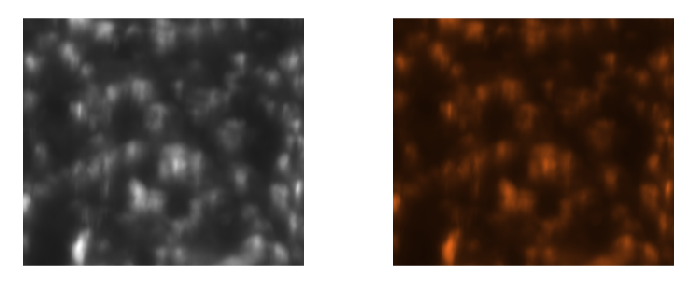跟着 Lua 5.1 官方参考文档学习 Lua (3)
文章目录
- 2.5 – Expressions
- 2.5.1 – Arithmetic Operators
- 2.5.2 – Relational Operators
- 2.5.3 – Logical Operators
- 2.5.4 – Concatenation
- 2.5.5 – The Length Operator
- 2.5.6 – Precedence
- 2.5.7 – Table Constructors
- 2.5.8 – Function Calls
- 2.5.9 – Function Definitions
- 2.6 – Visibility Rules
2.5 – Expressions
The basic expressions in Lua are the following:
exp ::= prefixexpexp ::= nil | false | trueexp ::= Numberexp ::= Stringexp ::= functionexp ::= tableconstructorexp ::= `...´exp ::= exp binop expexp ::= unop expprefixexp ::= var | functioncall | `(´ exp `)´
Numbers and literal strings are explained in §2.1;
variables are explained in §2.3;
function definitions are explained in §2.5.9;
function calls are explained in §2.5.8;
table constructors are explained in §2.5.7.
Vararg expressions, denoted by three dots (‘...’), can only be used when directly inside a vararg function; they are explained in §2.5.9.
Binary operators comprise arithmetic operators (see §2.5.1), relational operators (see §2.5.2), logical operators (see §2.5.3), and the concatenation operator (see §2.5.4).
Unary operators comprise the unary minus (see §2.5.1), the unary not (see §2.5.3), and the unary length operator (see §2.5.5).
Both function calls and vararg expressions can result in multiple values. If an expression is used as a statement (only possible for function calls (see §2.4.6)), then its return list is adjusted to zero elements, thus discarding all returned values. If an expression is used as the last (or the only) element of a list of expressions, then no adjustment is made (unless the call is enclosed in parentheses). In all other contexts, Lua adjusts the result list to one element, discarding all values except the first one.
Here are some examples:
f() -- adjusted to 0 resultsg(f(), x) -- f() is adjusted to 1 resultg(x, f()) -- g gets x plus all results from f()a,b,c = f(), x -- f() is adjusted to 1 result (c gets nil)a,b = ... -- a gets the first vararg parameter, b gets-- the second (both a and b can get nil if there-- is no corresponding vararg parameter)a,b,c = x, f() -- f() is adjusted to 2 resultsa,b,c = f() -- f() is adjusted to 3 resultsreturn f() -- returns all results from f()return ... -- returns all received vararg parametersreturn x,y,f() -- returns x, y, and all results from f(){f()} -- creates a list with all results from f(){...} -- creates a list with all vararg parameters{f(), nil} -- f() is adjusted to 1 result
Any expression enclosed in parentheses always results in only one value. Thus, (f(x,y,z)) is always a single value, even if f returns several values. (The value of (f(x,y,z)) is the first value returned by f or nil if f does not return any values.)
2.5.1 – Arithmetic Operators
Lua supports the usual arithmetic operators: the binary + (addition), - (subtraction), * (multiplication), / (division), % (modulo), and ^ (exponentiation); and unary - (negation). If the operands are numbers, or strings that can be converted to numbers (see §2.2.1), then all operations have the usual meaning. Exponentiation works for any exponent. For instance, x^(-0.5) computes the inverse of the square root of x. Modulo is defined as
a % b == a - math.floor(a/b)*b
That is, it is the remainder of a division that rounds the quotient towards minus infinity.
2.5.2 – Relational Operators
The relational operators in Lua are
== ~= < > <= >=
These operators always result in false or true.
Equality (==) first compares the type of its operands. If the types are different, then the result is false. Otherwise, the values of the operands are compared.
Numbers and strings are compared in the usual way.
Objects (tables, userdata, threads, and functions) are compared by reference: two objects are considered equal only if they are the same object. Every time you create a new object (a table, userdata, thread, or function), this new object is different from any previously existing object.
You can change the way that Lua compares tables and userdata by using the “eq” metamethod (see §2.8).
The conversion rules of §2.2.1 do not apply to equality comparisons. Thus, "0"==0 evaluates to false, and t[0] and t["0"] denote different entries in a table.
The operator ~= is exactly the negation of equality (==).
The order operators work as follows. If both arguments are numbers, then they are compared as such. Otherwise, if both arguments are strings, then their values are compared according to the current locale. Otherwise, Lua tries to call the “lt” or the “le” metamethod (see §2.8). A comparison a > b is translated to b < a and a >= b is translated to b <= a.
2.5.3 – Logical Operators
The logical operators in Lua are and, or, and not. Like the control structures (see §2.4.4), all logical operators consider both false and nil as false and anything else as true.
The negation operator not always returns false or true.
The conjunction operator and returns its first argument if this value is false or nil; otherwise, and returns its second argument. 【0&0=0, 0&1=0】
The disjunction operator or returns its first argument if this value is different from nil and false; otherwise, or returns its second argument. 【1|0=1, 1|1=1, 0|0=0, 0|1=1】
Both and and or use short-cut evaluation; that is, the second operand is evaluated only if necessary. Here are some examples:
10 or 20 --> 1010 or error() --> 10nil or "a" --> "a"nil and 10 --> nilfalse and error() --> falsefalse and nil --> falsefalse or nil --> nil10 and 20 --> 20
(In this manual, --> indicates the result of the preceding expression.)
2.5.4 – Concatenation
The string concatenation operator in Lua is denoted by two dots (‘..’). If both operands are strings or numbers, then they are converted to strings according to the rules mentioned in §2.2.1. Otherwise, the “concat” metamethod is called (see §2.8).
2.5.5 – The Length Operator
The length operator is denoted by the unary operator #. The length of a string is its number of bytes (that is, the usual meaning of string length when each character is one byte).
The length of a table t is defined to be any integer index n such that t[n] is not nil and t[n+1] is nil; moreover, if t[1] is nil, n can be zero.
For a regular array, with non-nil values from 1 to a given n, its length is exactly that n, the index of its last value. If the array has “holes” (that is, nil values between other non-nil values), then #t can be any of the indices that directly precedes a nil value (that is, it may consider any such nil value as the end of the array).
补充:If you really need to handle arrays with holes up to their last index, you can use the function table.maxn, which returns the largest numerical positive index of a table.
The length operator provides several common Lua idioms:
print(a[#a]) -- prints the last value of list ’a’
a[#a] = nil -- removes this last value
a[#a+1] = v -- appends ’v’ to the end of the list
例子:从标准输入读取10行数据
a = {}
for i=1,10 doa[#a+1] = io.read()
end
例子:
t = {}
t[10000] = 1
print(#t) -- 长度为0,因为t[1]为nilt = {}
t[1] = 1
t[2] = 1
t[3] = 1t[10000] = 1
print(#t) -- 长度为3print(table.maxn(t)) -- 输出 100002.5.6 – Precedence
Operator precedence in Lua follows the table below, from lower to higher priority:
orand< > <= >= ~= ==..+ -* / %not # - (unary)^
As usual, you can use parentheses to change the precedences of an expression. The concatenation (‘..’) and exponentiation (‘^’) operators are right associative. All other binary operators are left associative.
例子:^ 和 … 的右结合性
print(2^2^3) -- 2^(2^3) 而不是(2^2)^3print("a" .. "b" .. "c") -- "a" .. ("b" .. "c") 而不是 ("a" .. "b") .. "c"
补充:
Therefore, the following expressions on the left are equivalent to those on the right:
a+i < b/2+1 <--> (a+i) < ((b/2)+1)
5+x^2*8 <--> 5+((x^2)*8)
a < y and y <= z <--> (a < y) and (y <= z)
-x^2 <--> -(x^2)
x^y^z <--> x^(y^z)
When in doubt, always use explicit parentheses.
2.5.7 – Table Constructors
Table constructors are expressions that create tables. Every time a constructor is evaluated, a new table is created. A constructor can be used to create an empty table or to create a table and initialize some of its fields. The general syntax for constructors is
tableconstructor ::= `{´ [fieldlist] `}´fieldlist ::= field {fieldsep field} [fieldsep]field ::= `[´ exp `]´ `=´ exp | Name `=´ exp | expfieldsep ::= `,´ | `;´
Each field of the form [exp1] = exp2 adds to the new table an entry with key exp1 and value exp2. A field of the form name = exp is equivalent to ["name"] = exp. Finally, fields of the form exp are equivalent to [i] = exp, where i are consecutive numerical integers, starting with 1. Fields in the other formats do not affect this counting.
For example,
a = { [f(1)] = g; "x", "y"; x = 1, f(x), [30] = 23; 45 }
is equivalent to
dolocal t = {}t[f(1)] = gt[1] = "x" -- 1st expt[2] = "y" -- 2nd expt.x = 1 -- t["x"] = 1t[3] = f(x) -- 3rd expt[30] = 23t[4] = 45 -- 4th expa = tend
If the last field in the list has the form exp and the expression is a function call or a vararg expression, then all values returned by this expression enter the list consecutively (see §2.5.8). To avoid this, enclose the function call or the vararg expression in parentheses (see §2.5).
The field list can have an optional trailing separator, as a convenience for machine-generated code.
2.5.8 – Function Calls
A function call in Lua has the following syntax:
functioncall ::= prefixexp argsprefixexp ::= var | functioncall | `(´ exp `)´
In a function call, first prefixexp and args are evaluated. If the value of prefixexp has type function, then this function is called with the given arguments. Otherwise, the prefixexp “call” metamethod is called, having as first parameter the value of prefixexp, followed by the original call arguments (see §2.8).
The form
functioncall ::= prefixexp `:´ Name args
can be used to call “methods”. A call v:name(args) is syntactic sugar for v.name(v,args), except that v is evaluated only once.
Arguments have the following syntax:
args ::= `(´ [explist] `)´args ::= tableconstructorargs ::= String
All argument expressions are evaluated before the call.
A call of the form f{fields} is syntactic sugar for f({fields}); that is, the argument list is a single new table.
A call of the form f'string' (or f"string" or f[[string]]) is syntactic sugar for f('string'); that is, the argument list is a single literal string.
例子:函数参数语法的三种形式
function foo(a)print(a)
endfoo(1) -- 1foo"abc" -- abcfoo{1,2,3} -- table: ...
As an exception to the free-format syntax of Lua, you cannot put a line break before the ‘(’ in a function call. This restriction avoids some ambiguities in the language. If you write
a = f(g).x(a)
Lua would see that as a single statement, a = f(g).x(a). So, if you want two statements, you must add a semi-colon between them. If you actually want to call f, you must remove the line break before (g).
A call of the form return functioncall is called a tail call. Lua implements proper tail calls (or proper tail recursion): in a tail call, the called function reuses the stack entry of the calling function. Therefore, there is no limit on the number of nested tail calls that a program can execute. However, a tail call erases any debug information about the calling function.
Note that a tail call only happens with a particular syntax, where the return has one single function call as argument; this syntax makes the calling function return exactly the returns of the called function. So, none of the following examples are tail calls:
return (f(x)) -- results adjusted to 1return 2 * f(x)return x, f(x) -- additional resultsf(x); return -- results discardedreturn x or f(x) -- results adjusted to 1
2.5.9 – Function Definitions
The syntax for function definition is
function ::= function funcbodyfuncbody ::= `(´ [parlist] `)´ block end
The following syntactic sugar simplifies function definitions:
stat ::= function funcname funcbodystat ::= local function Name funcbodyfuncname ::= Name {`.´ Name} [`:´ Name]
The statement
function f () body end
translates to
f = function () body end
The statement
function t.a.b.c.f () body end
translates to
t.a.b.c.f = function () body end
The statement
local function f () body end
translates to
local f; f = function () body end
not to
local f = function () body end
(This only makes a difference when the body of the function contains references to f.)
补充:So, we can use this syntax for recursive functions without worrying:
local function fact (n)if n == 0 then return 1else return n*fact(n-1)end
end
A function definition is an executable expression, whose value has type function.
When Lua pre-compiles a chunk, all its function bodies are pre-compiled too. Then, whenever Lua executes the function definition, the function is instantiated (or closed). This function instance (or closure) is the final value of the expression. Different instances of the same function can refer to different external local variables and can have different environment tables.
补充:When a function is written enclosed in another function, it has full access to local variables from the enclosing function; this feature is called lexical scoping.
例子:闭包
names = {"Peter", "Paul", "Mary"}
grades = {Mary = 10, Paul = 7, Peter = 8}function sortbygrade (names, grades)table.sort(names, function (n1, n2)return grades[n1] > grades[n2] -- compare the gradesend)
endsortbygrade(names, grades)for _, v in ipairs(names) doprint(v)
end
The interesting point in the example is that the anonymous function given to sort accesses the parameter grades, which is local to the enclosing function sortbygrade. Inside this anonymous function, grades is neither a global variable nor a local variable, but what we call a non-local variable. (For historical reasons, non-local variables are also called upvalues in Lua.)
例子:使用闭包实现计数器
function newCounter ()local i = 0return function () -- anonymous functioni = i + 1return iend
endc1 = newCounter()
print(c1()) --> 1
print(c1()) --> 2c2 = newCounter()
print(c2()) --> 1
print(c1()) --> 3
print(c2()) --> 2
In this code, the anonymous function refers to a non-local variable, i, to keep its counter. However, by the time we call the anonymous function, i is already out of scope, because the function that created this variable (newCounter) has returned. Nevertheless, Lua handles this situation correctly, using the concept of closure. Simply put, a closure is a function plus all it needs to access nonlocal variables correctly.
Technically speaking, what is a value in Lua is the closure, not the function. The function itself is just a prototype for closures. Nevertheless, we will continue to use the term “function” to refer to a closure whenever there is no possibility of confusion.
Parameters act as local variables that are initialized with the argument values:
parlist ::= namelist [`,´ `...´] | `...´
When a function is called, the list of arguments is adjusted to the length of the list of parameters, unless the function is a variadic or vararg function, which is indicated by three dots (‘...’) at the end of its parameter list.
A vararg function does not adjust its argument list; instead, it collects all extra arguments and supplies them to the function through a vararg expression, which is also written as three dots. The value of this expression is a list of all actual extra arguments, similar to a function with multiple results.
If a vararg expression is used inside another expression or in the middle of a list of expressions, then its return list is adjusted to one element. If the expression is used as the last element of a list of expressions, then no adjustment is made (unless that last expression is enclosed in parentheses).
As an example, consider the following definitions:
function f(a, b) endfunction g(a, b, ...) endfunction r() return 1,2,3 end
Then, we have the following mapping from arguments to parameters and to the vararg expression:
CALL PARAMETERSf(3) a=3, b=nilf(3, 4) a=3, b=4f(3, 4, 5) a=3, b=4f(r(), 10) a=1, b=10f(r()) a=1, b=2g(3) a=3, b=nil, ... --> (nothing)g(3, 4) a=3, b=4, ... --> (nothing)g(3, 4, 5, 8) a=3, b=4, ... --> 5 8g(5, r()) a=5, b=1, ... --> 2 3
Results are returned using the return statement (see §2.4.4). If control reaches the end of a function without encountering a return statement, then the function returns with no results.
The colon syntax is used for defining methods, that is, functions that have an implicit extra parameter self. Thus, the statement
function t.a.b.c:f (params) body end
is syntactic sugar for
t.a.b.c.f = function (self, params) body end
2.6 – Visibility Rules
Lua is a lexically scoped language. The scope of variables begins at the first statement after their declaration and lasts until the end of the innermost block that includes the declaration. Consider the following example:
x = 10 -- global variabledo -- new blocklocal x = x -- new 'x', with value 10print(x) --> 10x = x+1do -- another blocklocal x = x+1 -- another 'x'print(x) --> 12endprint(x) --> 11endprint(x) --> 10 (the global one)
Notice that, in a declaration like local x = x, the new x being declared is not in scope yet, and so the second x refers to the outside variable.
Because of the lexical scoping rules, local variables can be freely accessed by functions defined inside their scope. A local variable used by an inner function is called an upvalue, or external local variable, inside the inner function.
Notice that each execution of a local statement defines new local variables. Consider the following example:
a = {}local x = 20for i=1,10 dolocal y = 0a[i] = function () y=y+1; return x+y endend
The loop creates ten closures (that is, ten instances of the anonymous function). Each of these closures uses a different y variable, while all of them share the same x.
相关文章:
)
跟着 Lua 5.1 官方参考文档学习 Lua (3)
文章目录 2.5 – Expressions2.5.1 – Arithmetic Operators2.5.2 – Relational Operators2.5.3 – Logical Operators2.5.4 – Concatenation2.5.5 – The Length Operator2.5.6 – Precedence2.5.7 – Table Constructors2.5.8 – Function Calls2.5.9 – Function Definiti…...

ORM框架详解:为什么不直接写SQL?
想象一下,你正在开发一个小型的在线书店应用。你需要存储书籍信息、用户数据和订单记录。作为一个初学者,你可能会想:“我已经学会了SQL,为什么还要使用ORM框架呢?直接写SQL语句不是更简单、更直接吗?” 如…...

【Server Components 解析:Next.js 的未来组件模型】
🛠️ Server Components 解析:Next.js 的未来组件模型 本文将用 3000 字 ,带你彻底掌握 React Server Components 的核心原理与实战技巧。无论你是刚接触 Next.js 的新手,还是想优化现有项目的老手,这里都有你需要的关…...

2025最新智能优化算法:改进型雪雁算法(Improved Snow Geese Algorithm, ISGA)求解23个经典函数测试集,MATLAB
一、改进型雪雁算法 雪雁算法(Snow Geese Algorithm,SGA)是2024年提出的一种新型元启发式算法,其灵感来源于雪雁的迁徙行为,特别是它们在迁徙过程中形成的独特“人字形”和“直线”飞行模式。该算法通过模拟雪雁的飞行…...

基于spring boot物流管理系统设计与实现(代码+数据库+LW)
摘 要 社会发展日新月异,用计算机应用实现数据管理功能已经算是很完善的了,但是随着移动互联网的到来,处理信息不再受制于地理位置的限制,处理信息及时高效,备受人们的喜爱。本次开发一套物流管理系统有管理员和用户…...

HTTP 和RESTful API 基础,答疑
一文搞懂RESTful API - bigsai - 博客园 1. API 路径 开头必须 /,表示绝对路径,不支持 . 或 ..(相对路径)。API 结尾 / 通常不需要,但部分框架会自动处理 / → 无 /。 ✅ 推荐 GET /api/v1/products # 资源集合…...

【数据挖掘】深度挖掘
【数据挖掘】深度挖掘 目录:1. 减少样本集的数量知识点示例 2. 对噪声比集剪枝知识点示例建立局部树代码示例(使用 Python 和 scikit - learn 库构建局部决策树)代码解释注意事项 最大超平面定义原理求解方法代码示例(使用 Python…...
基于Qt做OpenGL开发)
OpenGL(2)基于Qt做OpenGL开发
文章目录 一、基于Qt做OpenGL开发1、环境准备2、创建OpenGL窗口3、绘制基本图形 一、基于Qt做OpenGL开发 1、环境准备 确保你已经安装了 Qt 开发环境(包含 Qt Creator),并且支持 OpenGL 开发。在创建 Qt 项目时,选择 “Qt Widget…...

使用JWT实现微服务鉴权
目录 一、微服务鉴权 1、思路分析 2、系统微服务签发token 3、网关过滤器验证token 4、测试鉴权功能 前言: 随着微服务架构的广泛应用,服务间的鉴权与安全通信成为系统设计的核心挑战之一。传统的集中式会话管理在分布式场景下面临性能瓶颈和扩展性…...

高并发内存池项目介绍
💓博主CSDN主页:Am心若依旧409-CSDN博客💓 ⏩专栏分类:项目记录_⏪ 🚚代码仓库:青酒余成 🚚 🌹关注我🫵带你学习C 🔝🔝 1.前言 在经历一年多左右的时间…...

PHP会务会议系统小程序源码
📅 会务会议系统 一款基于ThinkPHPUniapp框架,精心雕琢的会议管理微信小程序,专为各类高端会议场景量身打造。它犹如一把开启智慧殿堂的金钥匙,为会议流程优化、开支精细化管理、数量精准控制、标准严格设定以及供应商严格筛选等…...

Java中的常用类 --String
学习目标 掌握String常用方法掌握StringBuilder、StringBuffer了解正则 1.String ● String是JDK中提前定义好的类型 其所在的包是java.lang ,String翻译过来表示字符串类型,也就是说String类中已经提前定义好了很多方法都是用来处理字符串的,所以Str…...

PWM(脉宽调制)技术详解:从基础到应用实践示例
PWM(脉宽调制)技术详解:从基础到应用实践示例 目录 PWM(脉宽调制)技术详解:从基础到应用实践示例学前思考:一、PWM概述二、PWM的基本原理三、PWM的应用场景四、PWM的硬件配置与使用五、PWM的编程…...

Hutool - DB 连接池配置集成
在实际开发中,尤其是在高并发场景下,使用连接池来管理数据库连接是非常必要的,它可以显著提高数据库操作的性能和效率。Hutool - DB 支持集成多种常见的连接池,如 HikariCP、Druid 等。下面分别介绍如何将这两种连接池集成到 Huto…...

激光工控机在自动化生产线中有什么关键作用?
激光工控机作为自动化生产线的核心设备,通过高精度控制、快速响应和智能化集成,在提升效率、保障质量、实现柔性制造等方面发挥着不可替代的作用。以下是其关键作用的具体分析: 一、实现高效连续生产: 1.高速加工能力࿱…...

Visual Studio Code的下载安装与汉化
1.下载安装 Visual Studio Code的下载安装十分简单,在本电脑的应用商店直接下载安装----注意这是社区版-----一般社区版就足够用了---另外注意更改安装地址 2.下载插件 重启后就是中文版本了...

nlp|微调大语言模型初探索(3),qlora微调deepseek记录
前言 上篇文章记录了使用lora微调llama-1b,微调成功,但是微调llama-8b显存爆炸,这次尝试使用qlora来尝试微调参数体量更大的大语言模型,看看64G显存的极限在哪里。 1.Why QLora? QLoRA 在模型加载阶段通过 4-bit 量化大幅减少了模型权重的显存占用。QLoRA 通过 反量化到 …...
:Token、Jwt令牌、Redis、ThreadLocal变量)
【全栈】SprintBoot+vue3迷你商城-细节解析(1):Token、Jwt令牌、Redis、ThreadLocal变量
【全栈】SprintBootvue3迷你商城-细节解析(1):Token、Jwt令牌、Redis、ThreadLocal变量 往期的文章都在这里啦,大家有兴趣可以看一下 后端部分: 【全栈】SprintBootvue3迷你商城(1) 【全栈】…...

基于ffmpeg+openGL ES实现的视频编辑工具(一)
在深入钻研音视频编辑开发这片技术海洋时,相信不少开发者都和我有同样的感受:网络上关于音视频编辑工具实现的资料繁多,理论阐释细致入微,代码片段也随处可见。然而,一个显著的缺憾是,缺乏一个完整成型的 A…...

面试完整回答:SQL 分页查询中 limit 500000,10和 limit 10 速度一样快吗?
首先:在 SQL 分页查询中,LIMIT 500000, 10 和 LIMIT 10 的速度不会一样快,以下是原因和优化建议: 性能差异的原因 LIMIT 10: 只需要扫描前 10 条记录,然后返回结果。 性能非常高,因为数据库只…...

Golang 面试经典题:map 的 key 可以是什么类型?哪些不可以?
Golang 面试经典题:map 的 key 可以是什么类型?哪些不可以? 在 Golang 的面试中,map 类型的使用是一个常见的考点,其中对 key 类型的合法性 是一道常被提及的基础却很容易被忽视的问题。本文将带你深入理解 Golang 中…...

微软PowerBI考试 PL300-选择 Power BI 模型框架【附练习数据】
微软PowerBI考试 PL300-选择 Power BI 模型框架 20 多年来,Microsoft 持续对企业商业智能 (BI) 进行大量投资。 Azure Analysis Services (AAS) 和 SQL Server Analysis Services (SSAS) 基于无数企业使用的成熟的 BI 数据建模技术。 同样的技术也是 Power BI 数据…...

FastAPI 教程:从入门到实践
FastAPI 是一个现代、快速(高性能)的 Web 框架,用于构建 API,支持 Python 3.6。它基于标准 Python 类型提示,易于学习且功能强大。以下是一个完整的 FastAPI 入门教程,涵盖从环境搭建到创建并运行一个简单的…...

AI病理诊断七剑下天山,医疗未来触手可及
一、病理诊断困局:刀尖上的医学艺术 1.1 金标准背后的隐痛 病理诊断被誉为"诊断的诊断",医生需通过显微镜观察组织切片,在细胞迷宫中捕捉癌变信号。某省病理质控报告显示,基层医院误诊率达12%-15%,专家会诊…...

【无标题】路径问题的革命性重构:基于二维拓扑收缩色动力学模型的零点隧穿理论
路径问题的革命性重构:基于二维拓扑收缩色动力学模型的零点隧穿理论 一、传统路径模型的根本缺陷 在经典正方形路径问题中(图1): mermaid graph LR A((A)) --- B((B)) B --- C((C)) C --- D((D)) D --- A A -.- C[无直接路径] B -…...

【从零学习JVM|第三篇】类的生命周期(高频面试题)
前言: 在Java编程中,类的生命周期是指类从被加载到内存中开始,到被卸载出内存为止的整个过程。了解类的生命周期对于理解Java程序的运行机制以及性能优化非常重要。本文会深入探寻类的生命周期,让读者对此有深刻印象。 目录 …...

NPOI Excel用OLE对象的形式插入文件附件以及插入图片
static void Main(string[] args) {XlsWithObjData();Console.WriteLine("输出完成"); }static void XlsWithObjData() {// 创建工作簿和单元格,只有HSSFWorkbook,XSSFWorkbook不可以HSSFWorkbook workbook new HSSFWorkbook();HSSFSheet sheet (HSSFSheet)workboo…...

[论文阅读]TrustRAG: Enhancing Robustness and Trustworthiness in RAG
TrustRAG: Enhancing Robustness and Trustworthiness in RAG [2501.00879] TrustRAG: Enhancing Robustness and Trustworthiness in Retrieval-Augmented Generation 代码:HuichiZhou/TrustRAG: Code for "TrustRAG: Enhancing Robustness and Trustworthin…...

Matlab实现任意伪彩色图像可视化显示
Matlab实现任意伪彩色图像可视化显示 1、灰度原始图像2、RGB彩色原始图像 在科研研究中,如何展示好看的实验结果图像非常重要!!! 1、灰度原始图像 灰度图像每个像素点只有一个数值,代表该点的亮度(或…...

CSS3相关知识点
CSS3相关知识点 CSS3私有前缀私有前缀私有前缀存在的意义常见浏览器的私有前缀 CSS3基本语法CSS3 新增长度单位CSS3 新增颜色设置方式CSS3 新增选择器CSS3 新增盒模型相关属性box-sizing 怪异盒模型resize调整盒子大小box-shadow 盒子阴影opacity 不透明度 CSS3 新增背景属性ba…...
